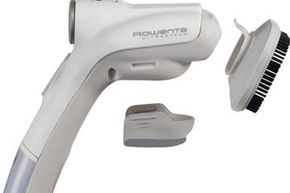Steamer vs. Iron
When it comes right down to it, the decision between iron and steamer is likely to be a matter of personal preference. On the one hand is the crisp sharpness that comes from a hot iron. On the other is the ease of use and gentle touch of a steamer. Of course, the pros and cons of each device also vary based on the material you're looking to unwrinkle.
If you've read this far, you know that a steamer relies on vapor spray, rather than a heated metal surface, to smooth out creases. An iron flattens wrinkles; a steamer relaxes the fibers so that they smooth out on their own. Using a steamer means less wear and tear on the item being steamed -- and none of those scorched, black-brown stains that come from a too-hot iron.
Advertisement
This gentle approach to wrinkle removal makes steamers better suited for soft and delicate materials like silk, satin and velvet, as well as those that are difficult to press, like wool. That may extend the lives of those delicate clothes. Steamers can also be used to smooth items that can't be handled by an iron -- like drapes, car upholstery, leather products and hairpieces. Savvy bakers have even been known to use steamers to keep cakes from sticking to pans and to attach flowers and other decorations to icing.
Yet steamers fall short of their iron-based colleagues when it comes to handling sharp creases and crisp fabrics like those used in dress shirts. Fabrics which are more likely to take on wrinkles -- think standard cotton -- are also easier to attack with a hot, heavy iron. In other words, there is a time to iron and a time to steam.
